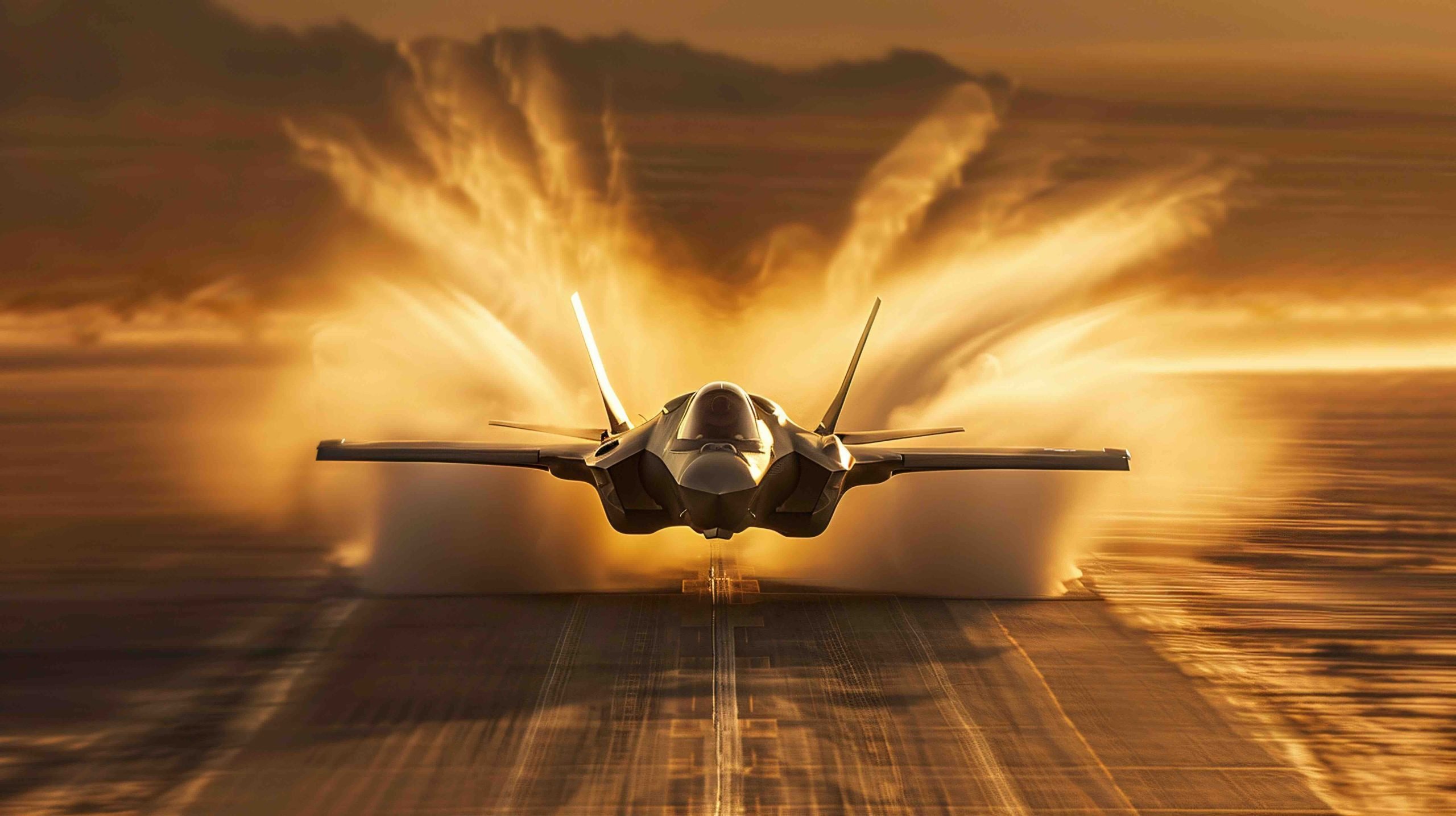The F-35 Lightning II, often simply referred to as the F-35, is one of the most advanced multirole fighters currently in operation. Developed by Lockheed Martin, this family of stealth multirole fighters has garnered global attention for its cutting-edge design and unparalleled capabilities. When discussing the performance characteristics of modern fighter jets, the top speed is a fundamental aspect that often comes into focus.
The F-35 Lightning II has a top speed of approximately Mach 1.6, which translates to about 1,200 miles per hour (1,931 kilometers per hour). This impressive speed is a testament to the aircraft’s powerful engine, the Pratt & Whitney F135. It is important to note that, while the F-35 might not be the fastest jet out there, it is the combination of speed with other advanced features—such as stealth, advanced sensor packages, and network-enabled capabilities—that makes the F-35 a revolutionary aircraft.
The F-35’s design incorporates a single-engine layout optimized for supersonic flight and is complemented by a sophisticated airframe that contributes to reduced radar cross-section. This stealth capability allows the F-35 to operate in contested environments where detection by enemy radar would otherwise be a significant threat. Thus, the combination of decent top speed and stealth characteristics provides it with a strategic edge in modern aerial combat scenarios.
In addition to its speed, the F-35 is also known for its versatility. The aircraft comes in three variants: the F-35A, the F-35B, and the F-35C, each designed to meet specific mission requirements. The F-35A is the conventional takeoff and landing (CTOL) variant, the F-35B is a short takeoff/vertical landing (STOVL) variant, and the F-35C is the carrier-based variant. This adaptability makes the F-35 suitable for various missions, ranging from air superiority and bombing to intelligence gathering and electronic warfare.
Furthermore, the F-35’s advanced avionics and sensor fusion capabilities provide pilots with unparalleled situational awareness. These systems enable the F-35 to process and share vast amounts of data in real time, enhancing its ability to coordinate with other assets on the battlefield. This highlights the fact that raw speed, while critical, is just one of many factors that define the F-35’s effectiveness as a multirole fighter.
In conclusion, the F-35 Lightning II’s top speed of Mach 1.6 is certainly a noteworthy characteristic, but it is the aircraft’s integration of speed, stealth, and advanced technological features that truly sets it apart in the realm of modern military aviation. As nations continue to adopt the F-35 into their fleets, its role in securing airspace dominance and performing complex missions underscores its status as one of the most formidable aircraft currently in service.
Unlocking the Power of the F-35 Lightning II: Tips, Life Hacks, and Fascinating Insights
Exploring the intriguing capabilities of the F-35 Lightning II presents endless avenues for discovery. As one of the most advanced multirole fighters today, understanding its features and applications can provide fascinating insights. Below are some tips, life hacks, and interesting facts related to this remarkable aircraft.
1. Maximizing Aerodynamic Performance
One of the critical elements in developing the F-35 was its aerodynamic design, which enhances its speed and stealth. For aviation enthusiasts or model builders, paying attention to the aerodynamic shape and surface finish can provide insights into designing your own sleek and efficient models.
2. Understanding Stealth Technology
The F-35’s design significantly reduces its radar cross-section, making it harder to detect. A life hack for those interested in stealth technology is understanding how different materials absorb or deflect radar waves. This knowledge can be informally applied to designing smaller-scale structures with minimized visibility to specific detectors.
3. Grasping Sensor Fusion
The F-35 is known for its advanced sensor fusion, which allows it to provide a complete picture of the battlefield. This concept can be applied in day-to-day technology or business: integrating data from various sources can provide a more comprehensive understanding and foster better decision-making.
4. Versatility: A Key Factor
Recognizing the F-35’s versatility through its three variants (A, B, and C) emphasizes the importance of adaptability. This principle can be translated into personal development—whether learning new skills or adapting professionally—to become more versatile in various situations.
5. Keeping Up with Technological Trends
The F-35 remains at the forefront of military aviation due to continuous upgrades and technological advancements. For tech enthusiasts, keeping abreast of the latest updates in military and civilian aviation can offer insights into the next big advancements that might infiltrate civilian tech eventually.
Interesting Fact: The Pratt & Whitney F135 engine used in the F-35 is one of the most powerful fighter jet engines ever built, delivering over 40,000 pounds of thrust. This showcases engineering prowess and the importance of continued innovation in propulsion technology.
Conclusion:
The F-35 Lightning II isn’t just a fighter jet; it’s a masterpiece of modern engineering that demonstrates the incredible advancements in aviation technology. By learning from its design and versatility, enthusiasts and professionals alike can draw inspiration to innovate within their own fields.
For those eager to explore more about cutting-edge aviation technology, the Lockheed Martin website is a valuable resource. Visit Lockheed Martin to learn more about the F-35 and other groundbreaking developments in aerospace and defense sectors.
















